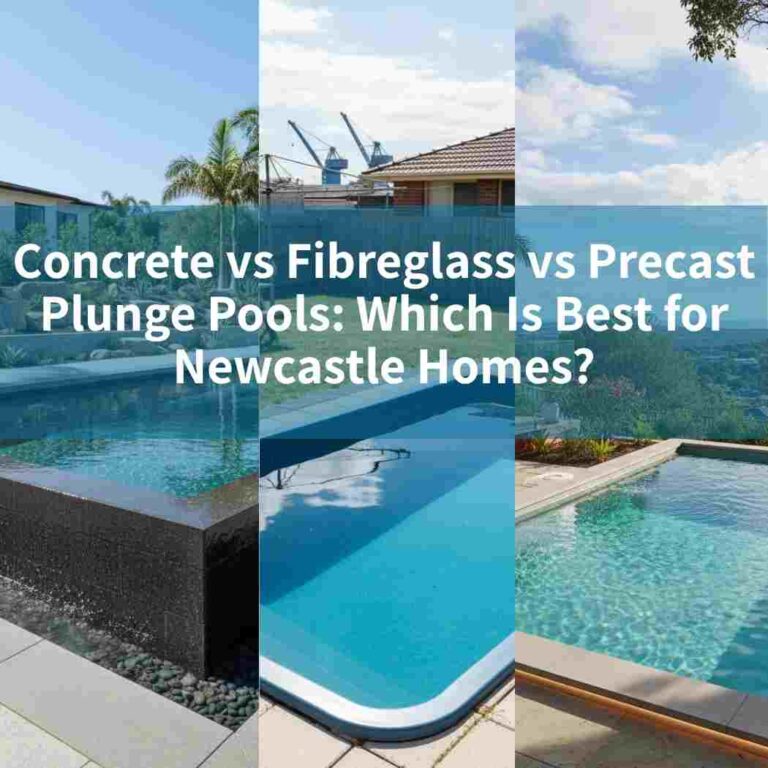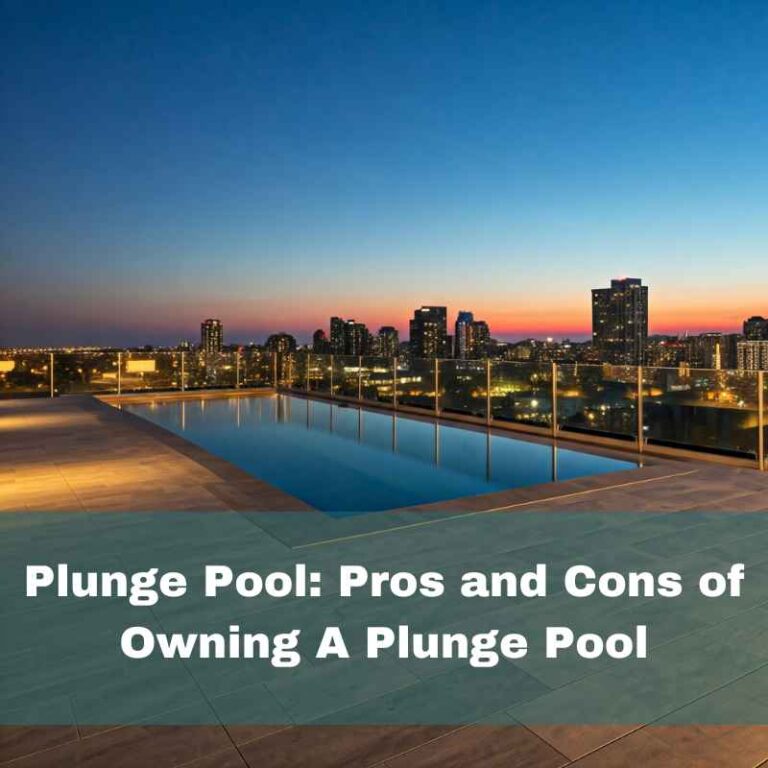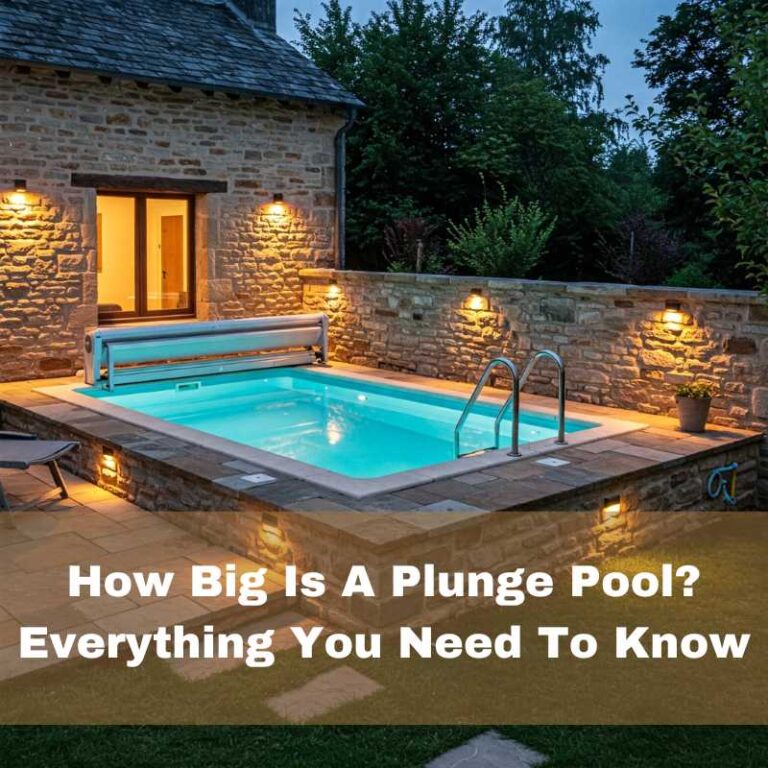At Plunge Pools Newcastle, we help with design, approvals, and installation. Our team knows the coastal soil, sloped blocks, and local planning rules in the area. This helps you pick the right pool with confidence.
In this guide, you will learn how concrete, fibreglass, and precast plunge pools differ in strength, cost, lifespan, and installation time. You will also see the best use cases and a simple checklist to help you choose.
Table of Contents
ToggleDefining Each Material
Concrete Plunge Pool

A concrete plunge pool is built on site with steel and poured concrete. It is the strongest type and gives full freedom for shape and finish. It suits homeowners who want a custom or luxury design.
Fibreglass Plunge Pool
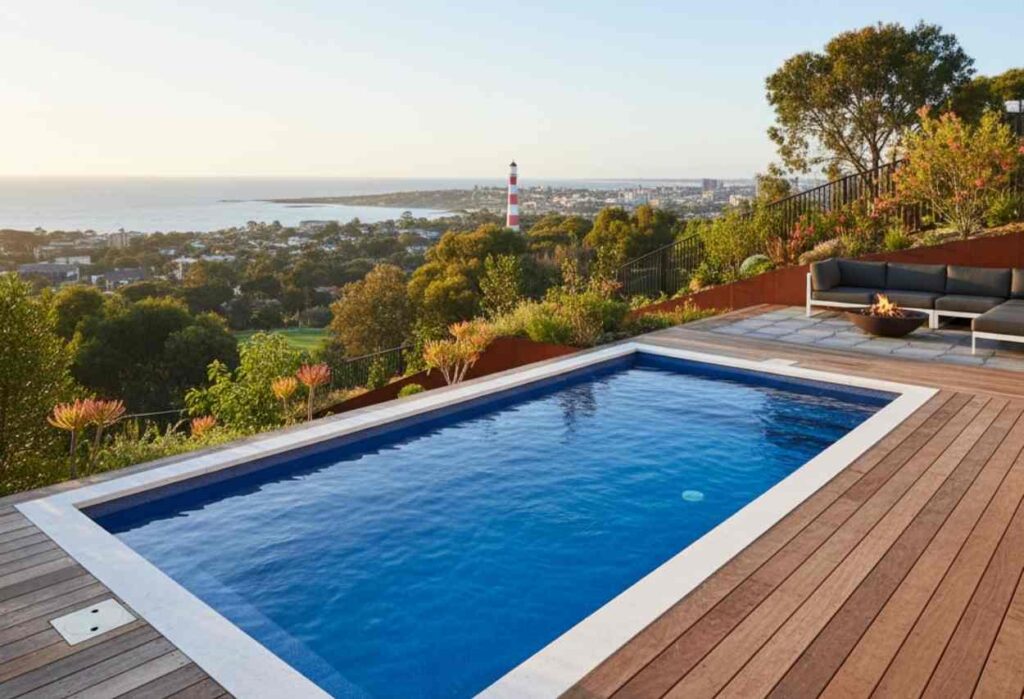
A fibreglass plunge pool is a pre-made shell made from resin and fibreglass layers. It has a smooth surface and is easy to clean. It comes in set shapes and sizes.
Precast Plunge Pool
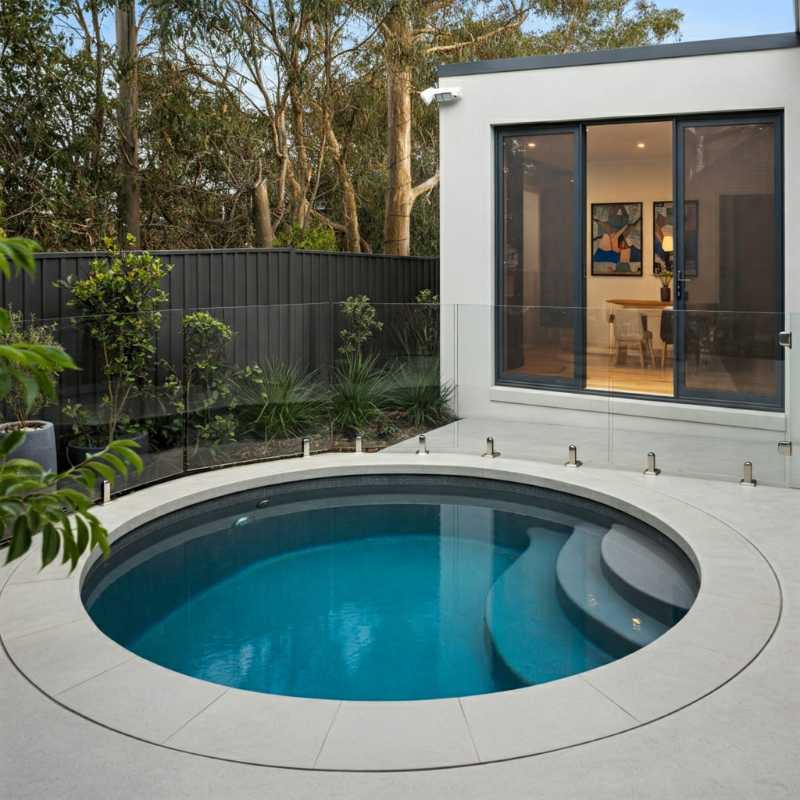
A precast plunge pool is made off-site with precast concrete and moved to your home by crane. It is strong, fast to install, and fits well in tight backyards.
Material Differences at a Glance
- Concrete → strongest structure, most flexible design
- Fibreglass → smooth surface and fastest to install
- Precast → strong walls, good value, quick placement
How Each Material Performs
Insulation
Fibreglass holds heat the best because of its resin layers. Concrete holds heat well but may need extra insulation. Precast sits between the two based on wall thickness.
Strength
Concrete is the strongest and handles soil movement well. Precast also has strong walls because of its dense concrete. Fibreglass can flex if the base is not stable.
Lifespan
Concrete lasts 50+ years with care. Fibreglass lasts 20–30 years. Precast also has a long life when placed on a solid base.
Manufacturing and Installation
Concrete
Built on site and cured for weeks. Best for custom projects, but has the longest install time.
Fibreglass
Delivered as a full shell. Install time is 1–3 days, making it the fastest option.
Precast
Made off-site and placed with a crane. Install time is usually under one week.
Site Preparation
All pool types need soil checks, base preparation, and drainage planning. Newcastle has sandy soil, clay areas, and sloped blocks, so a soil test helps keep your pool stable for many years.
Cost and Lifetime Value
Install Cost
- Concrete: highest upfront
- Fibreglass: lowest upfront
- Precast: mid-range
Lifetime Cost
Concrete may need resurfacing over time. Fibreglass has the lowest cleaning and energy use. Precast has low upkeep when installed well.
Best Long-Term Value
- Concrete: best for luxury homes
- Fibreglass: best for low-maintenance families
- Precast: best for balanced budgets and rental homes
Advantages, Disadvantages and Common Problems
| Material | Advantages | Disadvantages / Risks |
|---|---|---|
| Concrete | Very strong, full custom design | Can crack, long build time, and algae if unsealed |
| Fibreglass | Fast install, smooth surface | Limited sizes, colour fading, and shell movement |
| Precast | Strong, fast placement | Heavy transport, size limits, and fewer finishes |
Environmental Impact and Care
Concrete uses more materials but lasts a long time. Fibreglass uses the least chemicals and is very easy to clean. Precast has a moderate footprint and simple care needs.
Best Use Cases
Concrete
Best for luxury homes, custom shapes, and unique layouts.
Fibreglass
Best for fast installs, tight spaces, and low-maintenance families.
Precast
Best for urban homes, rental properties, and quick installs.
Which Material Lasts Longest or Needs the Least Care?
- Longest life: concrete
- Least care: fibreglass
- Best balance: precast
How to Choose the Right Plunge Pool Material
1. Budget and Time
Pick fibreglass or precast for fast and low-cost installs. Select concrete for a fully customised design.
2. Shape and Look
Concrete lets you choose any shape. Fibreglass and precast come in set sizes.
3. Care and Life
Fibreglass needs the least care. Concrete lasts the longest. Precast gives balanced performance.
Summary Comparison Table
| Feature | Concrete | Fibreglass | Precast |
|---|---|---|---|
| Customisation | ★★★★★ | ★★☆☆☆ | ★★★☆☆ |
| Durability | ★★★★★ | ★★★★☆ | ★★★★★ |
| Installation Speed | ★☆☆☆☆ | ★★★★★ | ★★★★☆ |
| Cost Efficiency | ★★☆☆☆ | ★★★★☆ | ★★★★☆ |
| Maintenance | ★★★☆☆ | ★★★★★ | ★★★★☆ |
| Lifespan / ROI | ★★★★★ | ★★★☆☆ | ★★★★☆ |
Conclusion
Concrete, fibreglass, and precast plunge pools all work well in Newcastle. Pick concrete for full design freedom, fibreglass for fast and easy care, and precast for strong and simple installation.
If you need help choosing the right plunge pool, Plunge Pools Newcastle can guide you. We handle design, approvals, and installation from start to finish.
Contact Plunge Pools Newcastle today to get advice or start planning your new pool.
FAQs
Do I need council approval for all plunge pool types in Newcastle?
Yes. All pool types need approval under NSW rules. You may need a Development Application or a Complying Development Certificate, depending on your block and safety requirements.
Can concrete, fibreglass, or precast pools be heated in cooler months?
Yes. All types work well with heat pumps, gas heating, or solar. Fibreglass and precast hold heat slightly better.
What safety rules apply to plunge pools in NSW?
All pools must follow the NSW Swimming Pools Act and AS1926. This includes a compliant fence, a self-closing gate, and a safe access area.
Can I add features like jets or tiles to all pool types?
Yes. Concrete offers full freedom. Fibreglass and precast also allow features, but only within the limits of their shell design
Do Newcastle soil types affect installation?
Yes. Sandy soil needs support, clay needs drainage, and sloped blocks may need retaining walls. Concrete and precast handle tough soil well. Fibreglass needs a very stable base.


